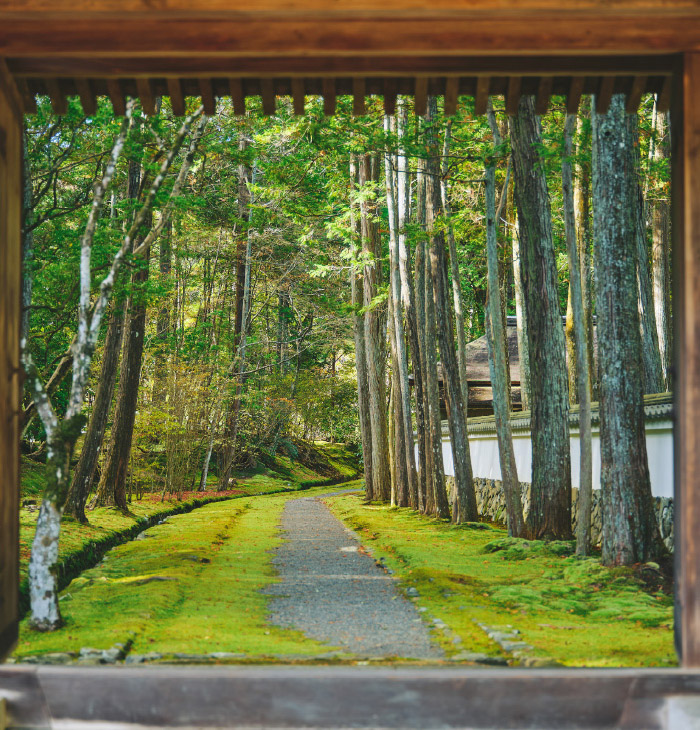about Saihoji
Creating a Reservation System
Saihoji opened its gardens to the general public in 1928. The beauty of the over 120 varieties of moss that cover the gardens earned the temple the nickname “Moss Temple” (Koke-dera), and after the Second World War, it served as the setting for Osaragi Jiro’s novel Homecoming (Kikyo), adding to its fame. Starting in around 1955, there was a big gardening fad, inspiring large numbers of visitors from all over the world to come and see the gardens at Saihoji. At one point, Saihoji received the fourth-highest number of visitors of all temples in Kyoto.
Unfortunately, the huge number of visitors caused many problems such as congestion, traffic jams, noise, and increased garbage. The temple discussed the issues and considered countermeasures with local authorities and residents, but was unable to find a meaningful solution. Rather than recklessly taking advantage of the boom in tourism to increase the number of visitors, the temple decided in 1977 to allow only a small number of people to visit, requiring them to apply in advance (by return postcard). This policy would allow the temple to maintain the temple’s authentic religious atmosphere and enable people to visit in peace and quiet.

The offerings the temple receives from visitors is a precious financial resource used for the upkeep and maintenance of the temple. Much of this source of income was lost with the creation of the advanced reservation system, so from the perspective of temple preservation, it was a difficult decision to take this step. Nevertheless, out of a sincerely-held conviction that a temple should be a spiritual home for people, it was decided that the new system would allow Saihoji to remain true to the fundamental principles of a Buddhist temple.
Since adopting this policy of limiting entry, the temple has been able to offer more personalized guidance to each visitor, and the temple has received much positive feedback from visitors. The policy has also reduced the impact on the gardens and helped preserve the moss and nature. At the same time, the advanced reservation policy added to the image of the Saihoji as “the beautiful moss temple that everyone must visit at least once in their lifetimes.”
Re-Thinking the Role and Meaning of Being a Temple
Fifty years have passed since Saihoji suspended public access, and the environment surrounding the temple has changed dramatically over the decades. The temple has always adjusted the content of its visit services to keep up with the changing times, but with the 1,300th anniversary of the temple’s founding coming up in 2031, the time has come to take a fresh look at what it means to be a Buddhist temple. What can the temple do to carry on and deepen our devotion to being a “spiritual home” for people today? One of our answers to this question is the “Saihokai” membership program, which will be launched in September 2023. This program will enable the temple to establish closer and deeper ties to those who love Saihoji, while allowing the temple to maintain the its policy of limiting entry to a restricted number of visitors in order to ensure that people can continue to visit the temple in a relaxed atmosphere.
Saihoji wants visitors to not only see the beauty of moss and experience the temple in all five seasons, and to reflect on its history and legacy. The temple wants to continue being a temple that is like a “spiritual home” where people can regularly come to reflect on themselves, return to their origins, and prepare to embark on new journeys. That is the temple’s sincere desire.

